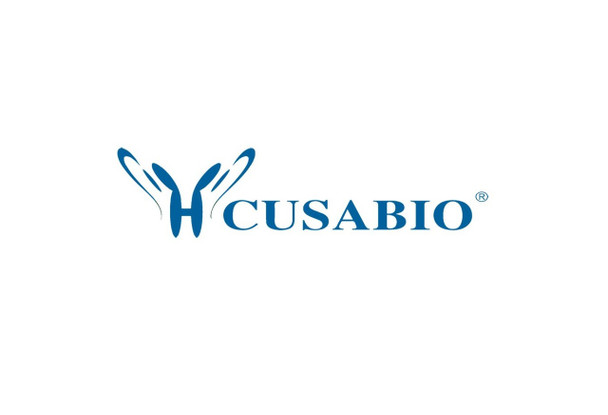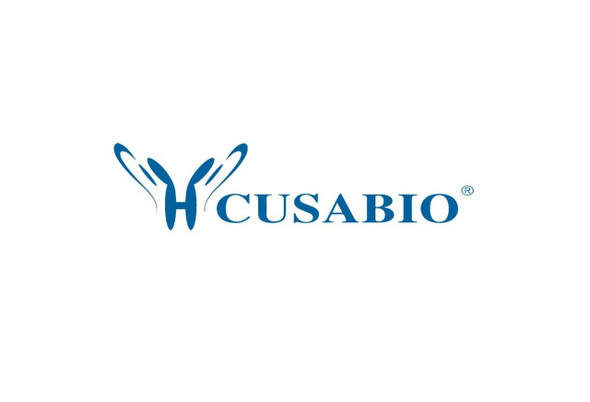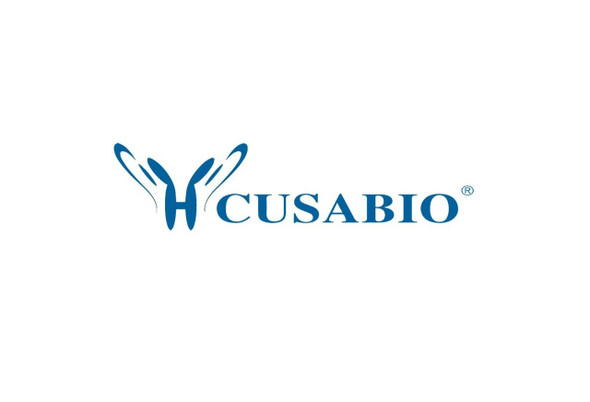Cusabio Mouse Recombinants
Recombinant Mouse Receptor-type tyrosine-protein phosphatase S (Ptprs), partial | CSB-EP019064MO
- SKU:
- CSB-EP019064MO
- Availability:
- 3 - 7 Working Days
Description
Recombinant Mouse Receptor-type tyrosine-protein phosphatase S (Ptprs), partial | CSB-EP019064MO | Cusabio
Alternative Name(s): PTPNU-3 Receptor-type tyrosine-protein phosphatase sigma
Gene Names: Ptprs
Research Areas: Neuroscience
Organism: Mus musculus (Mouse)
AA Sequence: EPGEHVTGMELEFKRLASSKAHTSRFITASLPCNKFKNRLVNILPYESSRVCLQPIRGVEGSDYINASFIDGYRQQKAYIATQGPLAETTEDFWRALWENNSTIVVMLTKLREMGREKCQYWPAERSARYQYFVVDPMAEYNMPQYILREFKVTDARDGQSRTVRQFQFTDWPEQGAPKSGEGFIDFIGQVHKTKEQFGQDGPISVHCSAGVGRTGVFITLSIVLERMRYEGVVDIFQTVKVLRTQRPAMVQTEDEYQFCFQAALEYLGSFDHYAT
Source: E.coli
Tag Info: N-terminal 10xHis-tagged and C-terminal Myc-tagged
Expression Region: 1631-1907aa
Sequence Info: Partial
MW: 39.2 kDa
Purity: Greater than 85% as determined by SDS-PAGE.
Relevance: Cell surface receptor that binds to glycosaminoglycans, including chondroitin sulfate proteoglycans and heparan sulfate proteoglycans (PubMed:19833921, PubMed:21454754, PubMed:22406547). Binding to chondroitin sulfate and heparan sulfate proteoglycans has opposite effects on PTPRS oligomerization and regulation of neurite outgrowth (PubMed:21454754). Contributes to the inhibition of neurite and axonal outgrowth by chondroitin sulfate proteoglycans, also after nerve transection (PubMed:15797710, PubMed:19833921, PubMed:19780196, PubMed:21454754, PubMed:22519304, PubMed:22406547). Plays a role in stimulating neurite outgrowth in response to the heparan sulfate proteoglycan GPC2 (PubMed:21454754). Required for normal brain development, especially for normal development of the pituitary gland and the olfactory bulb (PubMed:10080191). Functions as tyrosine phosphatase (PubMed:7529177). Mediates dephosphorylation of NTRK1, NTRK2 and NTRK3 (By similarity). Plays a role in down-regulation of signaling cascades that lead to the activation of Akt and MAP kinases (PubMed:15797710). Down-regulates TLR9-mediated activation of NF-kappa-B, as well as production of TNF, interferon alpha and interferon beta (PubMed:26231120).
Reference: "Receptor protein tyrosine phosphatase sigma regulates synapse structure, function and plasticity." Horn K.E., Xu B., Gobert D., Hamam B.N., Thompson K.M., Wu C.L., Bouchard J.F., Uetani N., Racine R.J., Tremblay M.L., Ruthazer E.S., Chapman C.A., Kennedy T.E. J. Neurochem. 122:147-161(2012)
Storage: The shelf life is related to many factors, storage state, buffer ingredients, storage temperature and the stability of the protein itself. Generally, the shelf life of liquid form is 6 months at -20?/-80?. The shelf life of lyophilized form is 12 months at -20?/-80?.
Notes: Repeated freezing and thawing is not recommended. Store working aliquots at 4? for up to one week.
Function:
Involvement in disease:
Subcellular Location:
Protein Families:
Tissue Specificity:
Paythway:
Form: Liquid or Lyophilized powder
Buffer: If the delivery form is liquid, the default storage buffer is Tris/PBS-based buffer, 5%-50% glycerol. If the delivery form is lyophilized powder, the buffer before lyophilization is Tris/PBS-based buffer, 6% Trehalose, pH 8.0.
Reconstitution: We recommend that this vial be briefly centrifuged prior to opening to bring the contents to the bottom. Please reconstitute protein in deionized sterile water to a concentration of 0.1-1.0 mg/mL.We recommend to add 5-50% of glycerol (final concentration) and aliquot for long-term storage at -20?/-80?. Our default final concentration of glycerol is 50%. Customers could use it as reference.
Uniprot ID: B0V2N1
HGNC Database Link: N/A
UniGene Database Link: N/A
KEGG Database Link: N/A
STRING Database Link: N/A
OMIM Database Link: N/A










